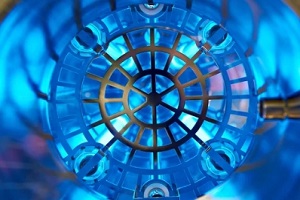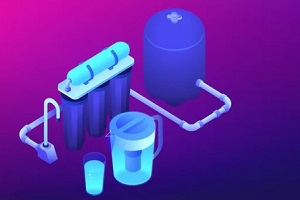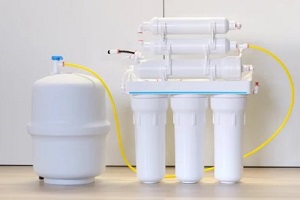 Water is essential for a healthy and balanced lifestyle. Unfortunately, the demand for safe drinking water often exceeds its availability in many local water systems due to dated infrastructure and chemical contamination. This makes it important to understand how the different water filtration systems work and how they can help provide clean drinking water to families and businesses.
Water is essential for a healthy and balanced lifestyle. Unfortunately, the demand for safe drinking water often exceeds its availability in many local water systems due to dated infrastructure and chemical contamination. This makes it important to understand how the different water filtration systems work and how they can help provide clean drinking water to families and businesses.
In Hawaii, two of the most widely used techniques include reverse osmosis filtration and ultraviolet purification. While both of these methods kill harmful bacteria, they both differ in how they filter out certain contaminants and the state they leave the water in when the process ends.
The following will help to understand how these methods work so that individuals interested in purchasing a filtration system can ensure they get the product that is right for their needs.
Reverse Osmosis Filtration vs. Ultraviolet Purification
Reverse osmosis (RO) filtration is a popular method of purifying water that is safe and effective. The RO process involves feeding the contaminated water through a semipermeable membrane that filters out harmful particles and impurities as the water passes through. This membrane can also be adjusted to target different chemicals and microorganisms.
Reverse osmosis filtration systems have been widely accepted because they effectively reduce contaminants such as bacteria, viruses, heavy metals, nitrates, and other pollutants in the water supply.
In contrast to the RO process that uses a semipermeable membrane to filter out large particles, UV purification works by using ultraviolet light energy to disrupt and deactivate organic molecules in water. UV purification is an effective way to disinfect drinking water since it can kill up to 99.9% of bacteria, viruses, and other living microorganisms present in the water.
 The UV purification process is carried out by a UV lamp that emits radiation through the untreated water. As UV light reaches the organic matter, it damages the genetic material and causes them to die.
The UV purification process is carried out by a UV lamp that emits radiation through the untreated water. As UV light reaches the organic matter, it damages the genetic material and causes them to die.
While this technique is great for removing microorganisms, it does not address other types of inorganic components that may need to be removed from the water as well. Additionally, it does not remove the bacteria that have been killed from the water, whereas the membranes used in RO filtration completely remove these impurities as well as targeted chemicals.
Overall, the main considerations between RO filtration and UV purification include:
- RO filtration uses a semi-permeable membrane to remove particles from water, while UV purification utilizes ultraviolet light to kill bacteria and other organisms in the water.
- RO filtration is often used for applications that require specific filtering adjustments based on usage, such as medical equipment or marine life hobbyists.
- RO filtration can remove up to 99% of dissolved solids, while UV purification does not physically filter out contaminants and relies on reactions created with light energy.
- The cost of purchasing and maintaining an RO system tends to be higher than that of a UV system due to the complexity of installation.
- Depending on your needs, you may need both technologies as they each have their own strengths when it comes to filtering out different types of pollutants.
- UV systems are chemical-free.
Reverse Osmosis Or UV Purification?
When deciding between RO filtration and UV purification, it is important to consider the specifics of each application. For example, if an area suffers from hard water with high levels of scale-forming minerals such as calcium carbonate, an RO system might be more cost-effective in the long run due to its ability to reduce consumable resources of soap and detergent while preventing scale buildup in plumbing lines.
On the other hand, if there is a need to remove bacteria and other pathogens from drinking water supplies then UV purification would be more suitable due to its efficiency at killing microorganisms without adding chemicals into the water supply.
However, RO systems are also highly efficient at removing bacterial contaminants from water supplies as well, making it a more well-rounded option for most drinking water applications. Both reverse osmosis filtration and ultraviolet purification can be used together to achieve the maximum benefit from both technologies.
 For most drinking water applications where removing both chemical contaminants as well as biological organisms is desired, an RO/UV combination may be able to provide optimal results in terms of safety and convenience.
For most drinking water applications where removing both chemical contaminants as well as biological organisms is desired, an RO/UV combination may be able to provide optimal results in terms of safety and convenience.
In situations where only microbiological safety is a concern without any specific issues regarding chemical pollutants, an ultraviolet system may be sufficient on its own. Ultimately, it depends on the specific needs of each application that will determine which technology or combination of technologies will be best suited for use in that situation.
Choosing The Water Filtration System That Is Right For Your Needs With Hawaiian Cool Water
At the end of the day, both reverse osmosis filtration and ultraviolet purification have their own benefits. Reverse osmosis is ideal for households who want to remove a variety of contaminants from their drinking water while UV systems are perfect for those looking to save on equipment costs.
Not only do these methods provide clean and safe drinking water, but they also help reduce our reliance on single-use plastic bottles, an eco-friendly role that we can all get behind.
Whether you choose to invest in reverse osmosis or an ultraviolet system, Hawaiian Cool Water is here to ensure you can easily access pure, fresh-tasting water. For more assistance in choosing the filtration system that is right for your needs, contact us today at 808-755-2369 or visit our website today.


